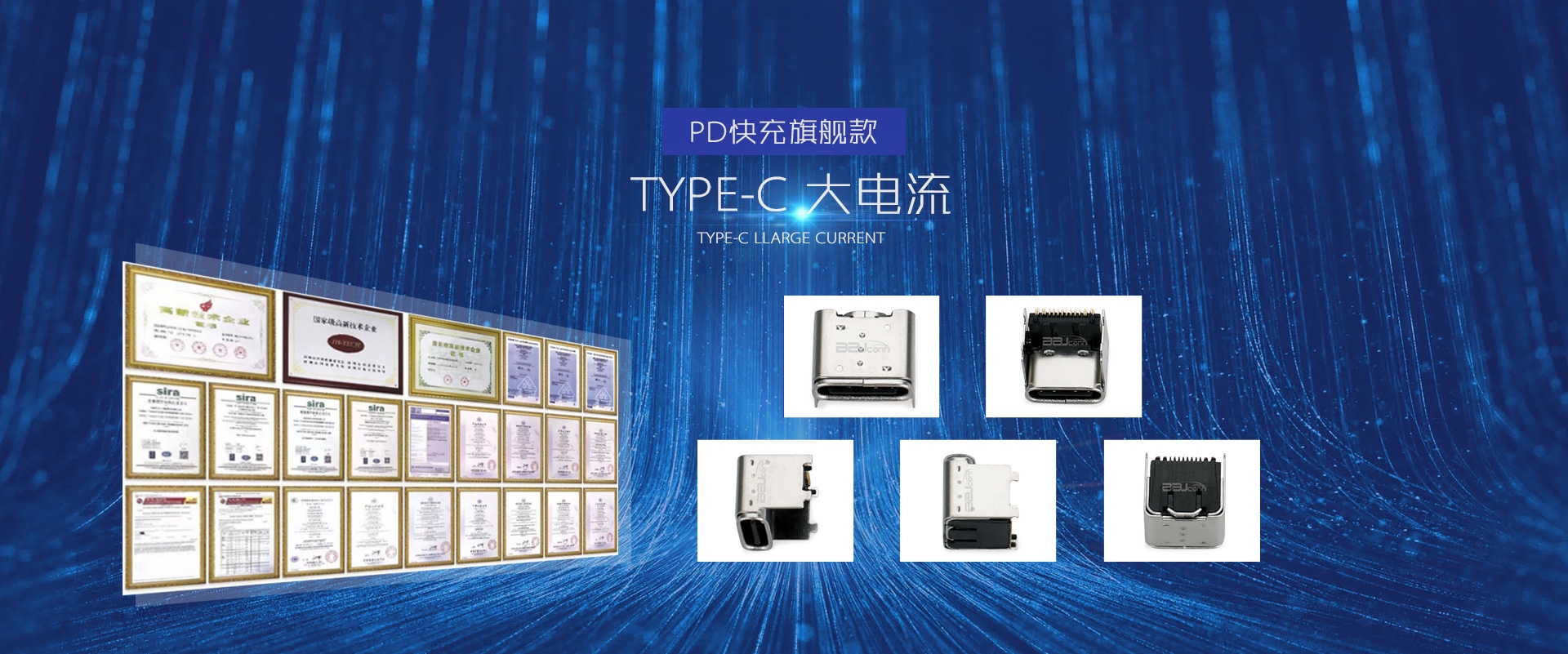Application and future development of Type-C interface in notebook field
Type-C interfaceAs an emerging standard in the field of electronic device connection, with its small size, fast speed, and two-way plug-in and pull-out characteristics, it is gradually replacing the traditional USB interface and becoming an important part of the notebook computer field. From the initial simple data transmission to now fully supporting For multi-functional applications such as charging and display output, the emergence of Type-C interface has undoubtedly brought revolutionary changes to the notebook industry. This article will deeply explore the application of Type-C interface in the notebook field and its future development trends.
Advantages and features of Type-C interface
With its unique design and excellent performance, the Type-C interface has become one of the most popular connection methods in modern electronic devices. First of all, the Type-C interface has a reversible bidirectional design, which means that regardless of the insertion direction, Both ensure a stable connection and avoid the need for a specific direction for traditional USB interfaces. The trouble of plugging in. Secondly, the Type-C interface supports power transmission up to 100W, which can provide a faster and more efficient charging experience for laptops. More importantly, the Type-C interface also supports high-speed data transmission and high-quality display output, making it have broad application potential in many fields.
Application of Type-C interface in notebook computers
The application of Type-C interface in the notebook field can be said to be comprehensive and far-reaching. First of all, its charging function has been greatly used in notebook computers. Traditional notebook power interfaces are often larger in size, and due to their single shape, there are Certain limitations. In contrast, the Type-C interface is not only small in size, but also Supporting higher charging power, notebook users can enjoy a faster battery charging experience when charging through the Type-C interface. Many high-end notebook computers, such as Apple's MacBook series, Dell XPS series, etc., have fully adopted the Type-C interface As its main interface for charging and data transmission.

Secondly, the Type-C interface is also widely used for data transmission and external device connection. Through the Type-C interface, users can easily connect external hard drives, mice, keyboards and other peripherals, and the supported data transmission speed can reach up to 10Gbps. Compared with traditional USB 3.0 interface, the speed has been significantly improved. In addition, many laptops have also begun to support connecting external displays through the Type-C interface, providing higher resolution and faster refresh rates, which makes the Type-C interface very popular in the field of work and entertainment. The application has been greatly expanded.
Standardization process of Type-C interface
The popularity of the Type-C interface is inseparable from the support of international standardization. At present, the USB Type-C interface has been accepted by many industries and manufacturers, and has become a unified connection standard for global electronic products. USB The introduction of the 3.1 standard has further improved the data transmission rate and charging power of the Type-C interface, providing a more efficient and stable connection method for laptops, smartphones and other devices. With the arrival of the USB4 standard, the Type-C interface has increased in bandwidth The potential of multi-functional applications will be further unleashed, supporting higher data transmission rates and more device expansion functions.
The Prospects of Type-C Interface in the Future Notebook Field
With the wide application of Type-C interface in notebook computers, we can foresee that it will play a role in more aspects in the future. First of all, with the popularization of 5G technology, Type-C interface may take on more data transmission tasks, including high-definition video streaming, virtual reality (VR) and augmented reality (AR) applications, etc. Secondly, the high-power transmission capability of the Type-C interface is expected to promote the development of notebook computers in a thinner and more efficient direction, especially in portable In terms of performance and battery life, the Type-C interface is undoubtedly a key factor in improving overall performance.
In addition, with the full promotion of Type-C interface in notebooks, future notebook computers may tend to be port-less designs, and more functions will be realized through wireless connections or more integrated interfaces. The Type-C interface is a highly Integrated connectivity will provide technical support for these future trends.
In general, the popularity of Type-C interface not only improves the functionality and user experience of notebook computers, but also provides new ideas for the development direction of future electronic products. From charging, data transmission to display output, Type-C interface With its high efficiency, flexibility and scalability, it is constantly changing the way notebook computers are used. With the advancement of standardization and the continuous advancement of technology, the Type-C interface will play an increasingly important role in the notebook field.
